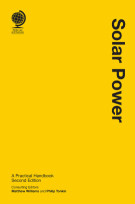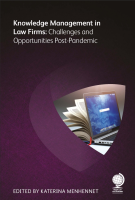Space tourism
16 January 2018

University of South Africa

LXL LLP
In our latest blog, Anél Ferreira-Snyman, University of South Africa and Yanal Abul Failat, LXL LLP discuss outer space law and the concerns arising in relation to commercial space travel and space tourism.
We live in an era where the distant dream of commercial space tourist travel, is quickly becoming a reality. This was already made evident in 2004 when Scaled Composites, won the Ansari X Prize with their space vehicle, SpaceShipOne, by flying past the altitude of 100 kilometres above the earth's surface, twice within two weeks, while being operated by a civilian pilot and carrying extra weight equivalent to two other passengers. Since then, a number of companies have been developing space vehicles and announced plans to take individuals into sub-orbital space aboard these vehicles in the near future. Commercial spaceports have also already been built or are planned for construction all over the globe. Although space tourism is still in its infancy, it is estimated that the number of space tourists may reach into the hundreds within the next few years. As space tourist activities increase, some legal and regulatory concerns arise in relation to commercial space travel and space tourism. Consequently, the development of this innovative industry has created a need for a suitable legal framework to regulate its activities.
The current space treaties are largely outdated and cannot adequately deal with the unique legal challenges presented by the rapidly developing space tourism industry. This is furthermore exacerbated by the fact that the outer space legal framework is very fragmented – consisting of treaties, UN principles and guidelines, regional regulations and intergovernmental agreements, as well as national guidelines and legislation. Some of the burning legal issues pertaining to space tourism that need clarification include the delimitation of outer space, the legal definition and status of a space tourist, and the liability for damage caused by or to space tourists.
The delimitation of outer space essentially concerns the question of where airspace ends and where outer space begins. The answer to this question is significant to determine which activities are indeed space activities under international space law, and which activities are governed by other legal regimes. In contrast to airspace, which falls under the territorial sovereignty of the underlying state, international law determines that outer space is not subject to the sovereignty of any particular state. Although it is widely accepted that the activities executed and objects placed beyond 100 kilometres above sea level are space activities and space objects, this delimitation continues to be debated in theory, and may constantly vary as a result of the development of new technology. When a vehicle carrying space tourists is launched from earth (or in the air) and returns to earth, the journey will obviously involve both air- and outer space. The delimitation of airspace and outer space thus has significant implications for the issue of liability for damages caused by space tourism activities, as such liability may be premised on different legal regimes, namely either air law or space law. The point at which the incident occurs will thus determine the legal position of the parties involved. This leads to uncertainty and inconsistency as to rights and obligations, which could arise during commercial flights on, especially, hybrid vehicles.
When the space treaties were formulated, the status of spacecraft passengers presented no challenge as only astronauts and cosmonauts participated in space flights. International space law does not define space tourists, nor determine their status. However, due to the rapidly developing commercial space industry, questions now arise regarding the legal status of, rights of, and obligations owed to commercial space flight passengers. It is unclear whether terms used in the space treaties, such as "astronaut", "personnel of a spacecraft", and "envoy of mankind", should apply to space tourists. Article V of the Outer Space Treaty (1967) describes astronauts as "envoys of mankind" and obliges states to provide astronauts with "all possible assistance in the event of accident, distress, or emergency landing on the territory of another State Party or the high seas". The Rescue Agreement (1969) specifically deals with the rendering of assistance to astronauts in the event of an accident, distress or emergency landing, the prompt and safe return of the astronauts and the return of objects launched into outer space. However, it is unclear whether the terms "astronaut" and "space personnel" in the Rescue Agreement also include space tourists, since neither of these terms is (formally) defined in any of the outer space treaties, nor in any domestic laws. This uncertainty leads to the question of whether or not states have a duty to rescue space tourists as passengers (as opposed to astronauts and personnel) on a spacecraft and whether visitors to the International Space Station (ISS) enjoy the special standing and protection afforded to astronauts.
Space tourist activities are risky and dangerous, and accidents will inevitably occur. A careful consideration of the Outer Space Treaty and the Liability Convention makes it clear that these instruments are aimed at the regulation of states and that they, therefore, do not make provision for the liability of private entities undertaking space activities. The responsibility for such activities resides with the launching state, which must authorise and continuously supervise the outer space activities of private entities, and which incurs liability for damage caused by these activities. Apart from the fact that it is not clear how launching states will implement their treaty obligations in a uniform manner, nothing prevents private entities to launch their space objects from a state that is unable or unwilling to control and supervise their outer space activities. The institution of a claim for damages uncured by a space tourist presents a number of challenges. Such a claim will have to be instituted on behalf of the individual by the launching state through diplomatic channels in terms of Article IX of the Liability Convention. This immediately raises the question whether states would have the political will to do this. If the claim cannot be settled through diplomatic negotiations, the parties concerned shall establish a Claims Commission, at the request of either party. However, no permanent dispute resolution forums have been established within the space law regime. Alternatively, a space tourist could bring a claim under the relevant national law, which may to subject such a claim to certain national limitations, such as capped liability limits. A number of states have been following this approach and implemented national space laws to protect themselves and private actors from the inadequacies of international law, and also to achieve their national space policy objectives. Whilst states have done so on the basis of similar objectives, the differences in national legislation has resulted in the further fragmentation of the outer space legal framework on a national level. Private actors will most probably seek to operate from forward-looking jurisdictions which incentivise them to develop their activities and which can sustain the space sector.
In order to ensure that space tourism is indeed to the benefit of all mankind, it is imperative that clear international legal rules relating to space tourism are formulated, where standards are set for the authorisation and supervision of these activities, and the interests of states, passengers and private actors are balanced as far as possible. Different suggestions have been made by commentators on the manner in which legal rules dealing with aspects relating to space tourism should be formulated and adopted. These include the adoption of protocols, the creation and adoption of an entirely new binding legal framework based on the principles of both air and space law and the creation of a single treaty dealing with space tourism matters. In view of the urgent need to address the relevant legal questions and the consequent lack of time to negotiate a binding legal instrument, we submit that as an interim measure soft law guidelines should be developed in relation to space tourism in order to provide a framework for the eventual creation of a consolidated and binding legal instrument on all aspects relating to the use and exploration of outer space. In this regard, the United Nations Convention on the Law of the Sea could serve as a valuable example. It is very likely that such a consolidated outer space treaty may very rapidly attain the status of customary international law. To mediate the fragmented nature of the current outer space legal regime, states should be encouraged to formulate their national (and regional) space legislation in accordance with the soft law guidelines.
In the words of Colin B Picker, (CB Picker ‘A view from 40,000 feet: International law and the invisible hand of technology’ 2001/2002 (23) Cardozo Law Review 149-219 at 201) “technology operates as an invisible hand on international law, guiding and shaping its development". However, it is clear that the current international outer space law regime is significantly underdeveloped in relation to outer space technology. It is, therefore, imperative that an international dialogue on space tourism be facilitated under the auspices of the United Nations Committee on the Peaceful Use of Outer Space to address the legal challenges illuminated here.
By: Anél Ferreira-Snyman, University of South Africa and Yanal Abul Failat, LXL LLP. Anél Ferreira-Snyman and Yanal Abul Failat are both consulting editors to our new title, Outer Space Law.













Any comments - send us an email